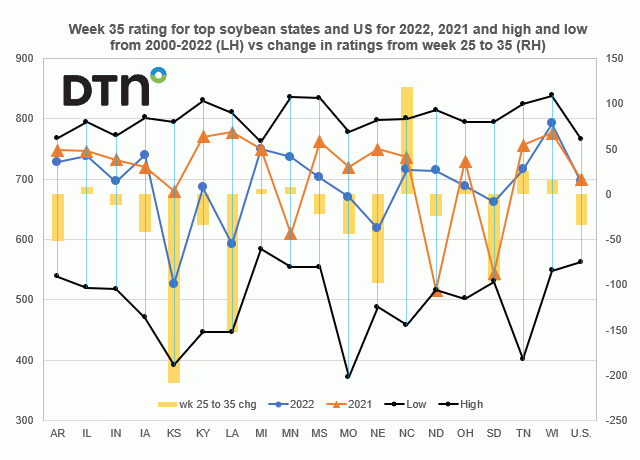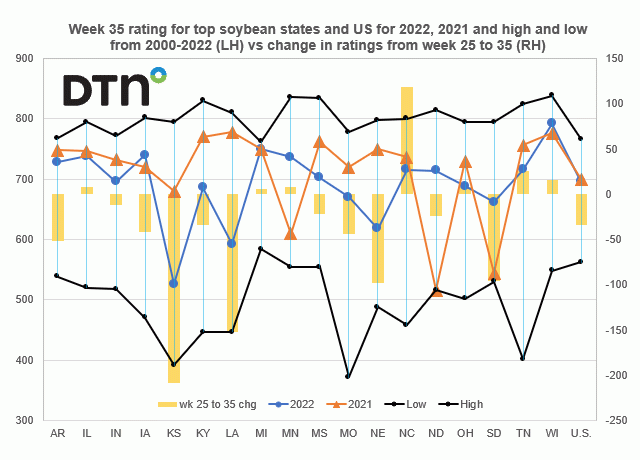Fundamentally Speaking
US Soybean Ratings About Equal to Year Ago Level
This chart shows the week 35 (beginning of September) crop ratings for the top 18 soybean producing states and the U.S. utilizing our usual ratings system where we weight the crop based on the percent in each category and assign that category a factor of 2 for very poor, 4 for poor, 6 for fair, 8 for good, and 10 for excellent and then sum the results.
On the left-hand axis is the week 35 ratings for this year, last year and the best and worst ratings for the period 2000-2022.
On the right-hand axis is the change in ratings from week 25 (around the end of June) to week 35, so about a little over a two-month time span.
P[L1] D[0x0] M[300x250] OOP[F] ADUNIT[] T[]
The results show Kansas as being the worst conditioned state with a rating of 526 which is down 154 points from the year ago rating of 680.
Nebraska's week 35 rating this year at 618 is also down a sharp 132 points from 2021 with the southern states of LA and TN also rather poorly rated and down from their year ago levels.
All four, especially KS and NE, have seen their soybean crop deteriorate quite substantially over the past two months.
The best rated states are WI, IL, MI, IA, and MN while the U.S. soybean crop is rated at 696, just below the year ago 700 level, a year in which the final yield was a second best ever of 51.5 bushels per acre (bpa) which could mean this year's crop could come in around 52.0 bpa.
One big reason is that even though crop conditions have declined substantially in SD over the past two months, just modestly so in ND and with MN seeing a slight improvement, the fact is that all three are seeing conditions well above the year ago levels, which for all three were the lowest or second lowest since 2000.
This is no small consideration as over the years these three states now account for about 25% of U.S. soybean acreage as beans have displaced a lot of the crops that used to be seeded in the Dakotas such as hard red spring and durum wheat, field peas, lentils, etc.
We also note that on a percentage basis, fewer beans than corn were seeded in areas of the Western Corn Belt and Plains that have seen very stressful growing conditions all season and more in Delta and Southeast that have seen relatively better growing conditions, though the problem now in some of these areas is too much rain.
(c) Copyright 2022 DTN, LLC. All rights reserved.






Comments
To comment, please Log In or Join our Community .